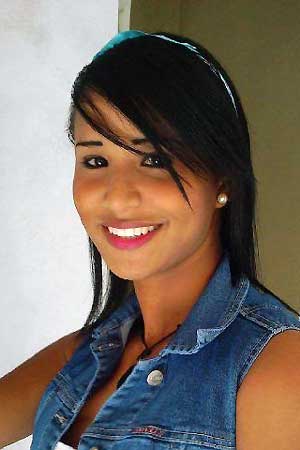(a) Discovering abilities

I acquired 12 bumble-bee (Bombus terrestris dalmatinus) colonies, each which has 3040 gurus, away from Koppert Biological Possibilities (Berkel en Rodenrijs, Holland). Every gurus was basically exclusively marked to the thorax that have numbered, coloured tags (Opalith tags; Christian Graze Kg, Germany). This acceptance individuals getting accurately understood in research learning experiments and you will profession foraging samples.
The fresh new bees had been pre-taught to forage regarding 20 bicoloured, bluish and you may red, artificial vegetation during the a research journey stadium. The latest square, bicoloured vegetation were manufactured from a couple halves (per twelve?24 mm): one to yellow (Perspex Red 260) therefore the almost every other bluish (Perspex Blue 727). Throughout pre-studies, the bicoloured vegetation was basically compensated with fifty% (w/w) sucrose services delivering prior to now along with-unsuspecting bees having the same possible opportunity to user both colours which have prize (Raine ainsi que al. 2006b). Bees doing at the least five straight foraging bouts with the bicoloured plants were chosen to have education. This type of foragers was basically coached actually, when you look at the a trip stadium which has 10 blue (Perspex Bluish 727) and you may ten red-colored (Perspex Red-colored 260) phony herbs (for each 24?24 mm). Red herbs was basically fulfilling (for each and every consisted of fifteen ?l from fifty% (w/w) sucrose service), when you’re bluish herbs have been blank (unrewarding). Bees was in fact regarded as opting for a flower after they often contacted (inspected) otherwise got involved. Obtaining toward a rose didn’t fundamentally result in a serving (probing) experience. Hence, ahead of probing a worthwhile (yellow) flower, bees could like both red-colored/rewarding or blue/unrewarding herbs because of the handling or landing in it (without probing). Choosing a purple (rewarding) rose is actually considered correct’, when you’re choosing a bluish (unrewarding) rose is actually considered to be a keen error’. I submitted the possibility series from for every bee regarding the big date it first joined brand new trip stadium. Tape the fresh flower choices for each bee stopped after it had made 99 rose choices adopting the very first time it probed a satisfying (yellow) rose (Raine ainsi que al. 2006b). Hence, for each bee produced at the very least 100 rose alternatives, for instance the first time they probed a rewarding flower, in addition to one options created before which first probing skills.
Herbs was in fact changed and their positions re also-randomized anywhere between foraging bouts to stop bees having fun with odor marks otherwise early in the day rose positions while the predictors from award. Rose tones was chose so that bees was required to beat their strong, unlearned taste to own blue, prior to accompanying certainly the innately the very least preferred colors (yellow) that have prize (Chittka et al. 2004; Raine mais aussi al. 2006a). Fifteen bees was indeed educated from for each and every nest (we.age. 180 bees in total) ranging from cuatro and . Thorax width dimensions was indeed removed for every single of those bees because a measure of human body dimensions. Controlled light having laboratory studies was provided by highest-frequency fluorescent bulbs (TMS 24F lighting fixtures having cuatro.step three kHz ballasts (Philips, The netherlands) suitable with Activa sunlight hoses (Osram, Germany)) to help you imitate absolute daylight above the bee flicker mix volume.
(b) Studying shape
The starting point for each bee’s learning curve was the proportion of errors made (blue flowers chosen) before the bee first probed a rewarding (yellow) flower. For bees making fewer than five flower choices (either by approaching or landing on them) before probing a rewarding flower (n=53), we used the colony mean proportion of errors (calculated from Tysk kvinner med amerikansk mann bees making five or more such choices). Flower choices made by each bee after (and including) the first time it probed a rewarding (yellow) flower were evaluated as the number of errors (blue flowers chosen) in each group of 10 choices. Learning curves (first-order exponential decay functions: y=y0+Ae ?x/t ) were fitted to these 11 data points (i.e. the start pointing and subsequent 10 groups of 10 flower choices) for each individual bee, using Microcal Origin (Chittka et al. 2004; Raine et al. 2006b), to capture the dynamic nature of the learning process. Here, x is the number of flower choices the bee made, starting with the first time it probed a yellow flower, and y is the number of errors. The saturation performance level (y0) is the number of errors made by a bee after finishing the learning process, i.e. when reaching a performance plateau. The decay constant (t) is a measure of learning speed: high values of t correspond to slow learning, whereas lower t values indicate faster learners. A is the curve amplitude: the maximum displacement (height) of the curve above y0. Both amplitude (A) and saturation performance (y0) were constrained between 0 and 10 for curve fitting. Eight (out of 180) bees showed no appreciable improvement in performance during the task, and the software generated learning curves’ that were essentially horizontal lines. These bees were excluded from subsequent analyses because their t values were either very high (>400) or negative.

